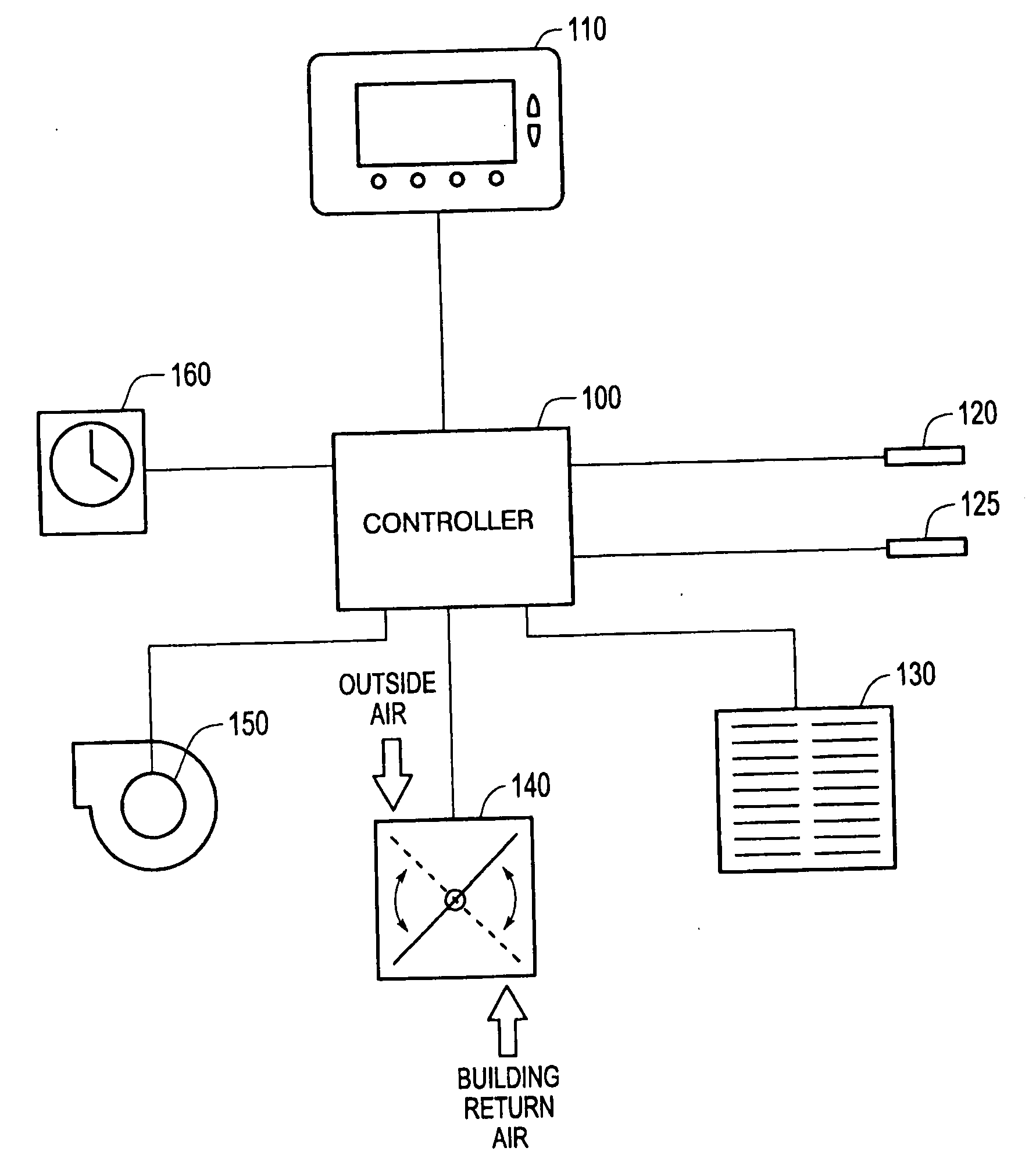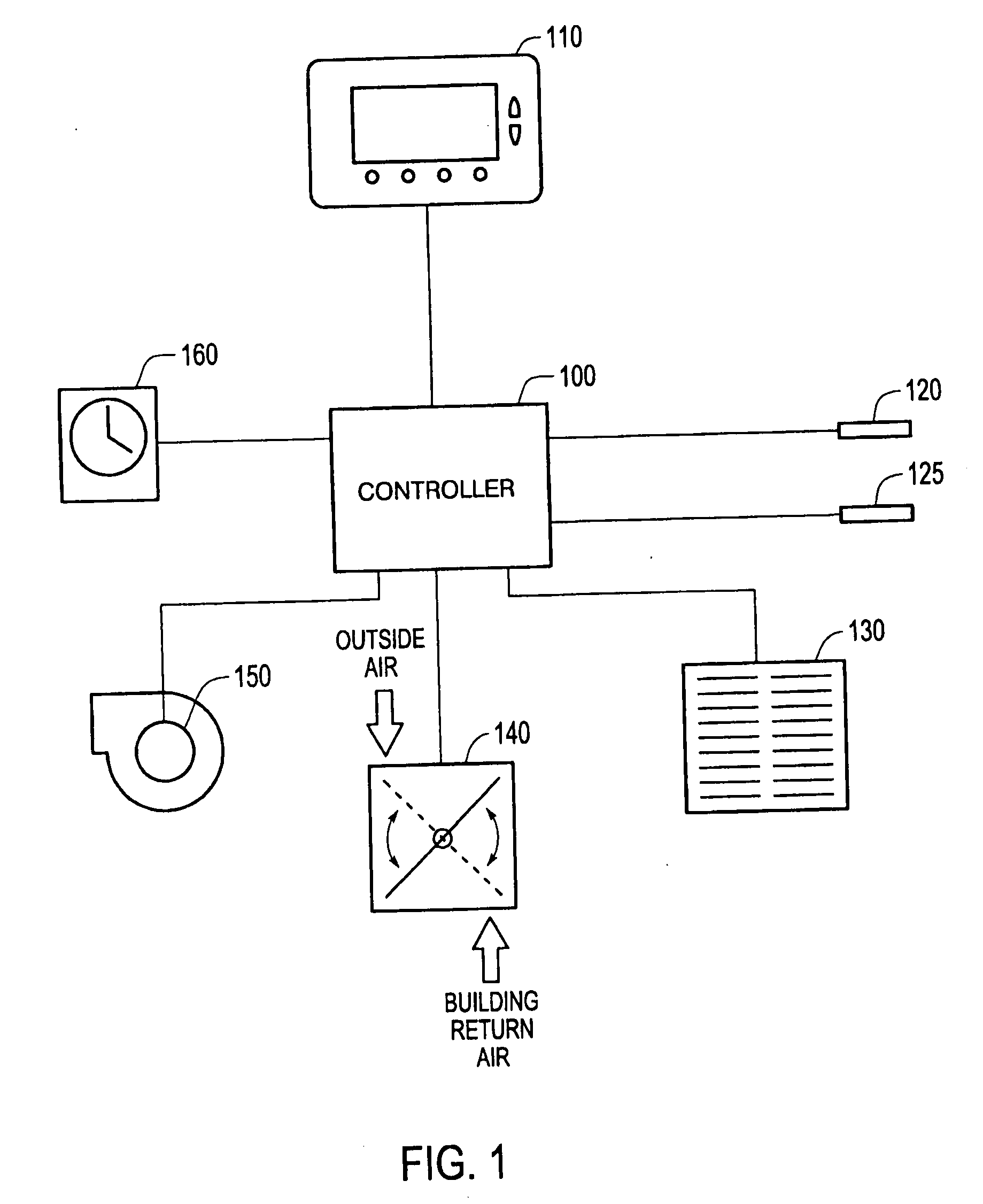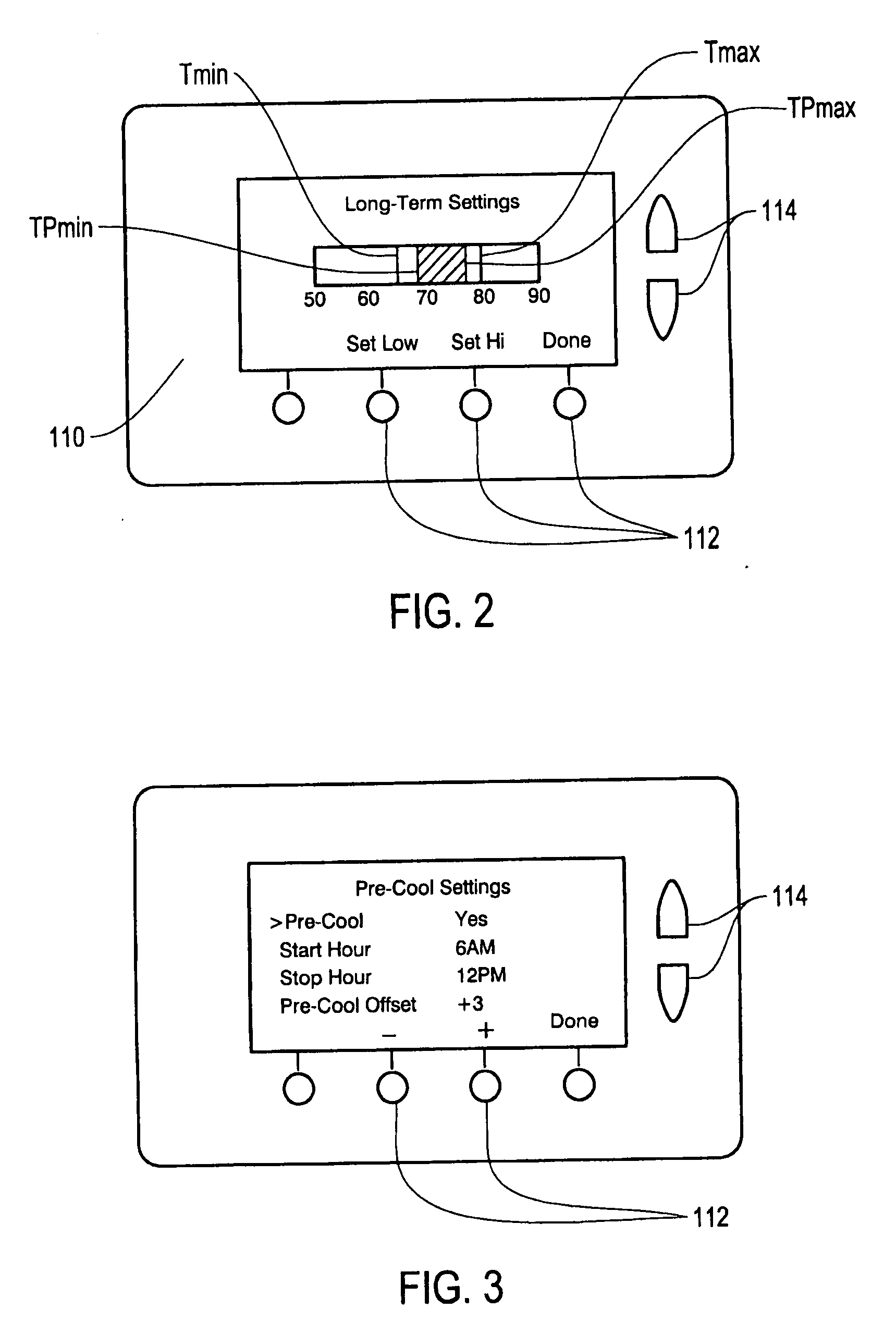System and method for pre-cooling of buildings
- Summary
- Abstract
- Description
- Claims
- Application Information
AI Technical Summary
Benefits of technology
Problems solved by technology
Method used
Image
Examples
Embodiment Construction
[0022] Embodiments of the present invention provide methods and controls for nighttime pre-cooling of a building. A description of these embodiments is provided with reference to drawing FIGS. 1-5.
[0023]FIG. 1 provides a schematic diagram of an integrated outside air ventilation cooling system and a vapor compression cooling system that may be utilized to practice an embodiment of the present invention. Outside air ventilation cooling systems and vapor compression cooling systems having other configurations known in the art, including integrated systems and separate systems may alternatively be utilized to practice embodiments of the present invention.
[0024]FIG. 2 provides a diagram of an input device, also referred to as a “user interface” or a “wall display unit,” that displays a first set of user-selected and operational settings. FIG. 3 provides another diagram of an input device that displays a second set of user-selected operational settings.
[0025] As shown in FIGS. 4 and 5...
PUM
 Login to View More
Login to View More Abstract
Description
Claims
Application Information
 Login to View More
Login to View More - R&D
- Intellectual Property
- Life Sciences
- Materials
- Tech Scout
- Unparalleled Data Quality
- Higher Quality Content
- 60% Fewer Hallucinations
Browse by: Latest US Patents, China's latest patents, Technical Efficacy Thesaurus, Application Domain, Technology Topic, Popular Technical Reports.
© 2025 PatSnap. All rights reserved.Legal|Privacy policy|Modern Slavery Act Transparency Statement|Sitemap|About US| Contact US: help@patsnap.com



